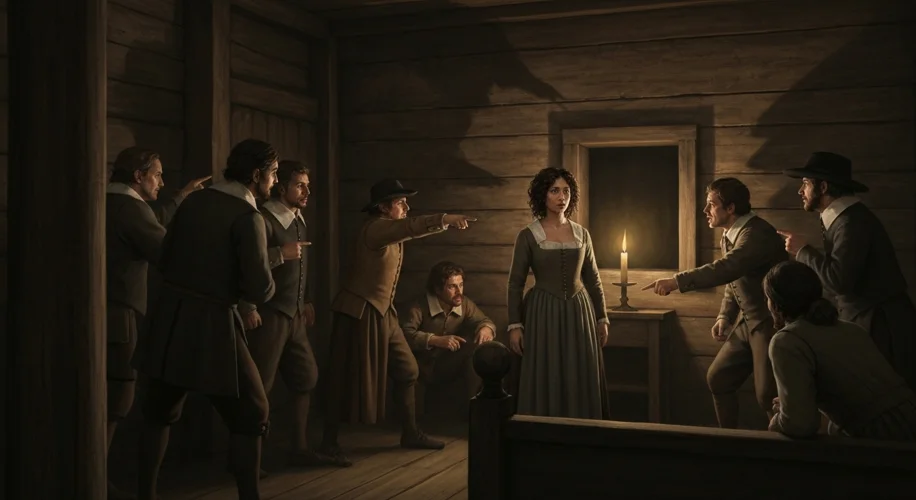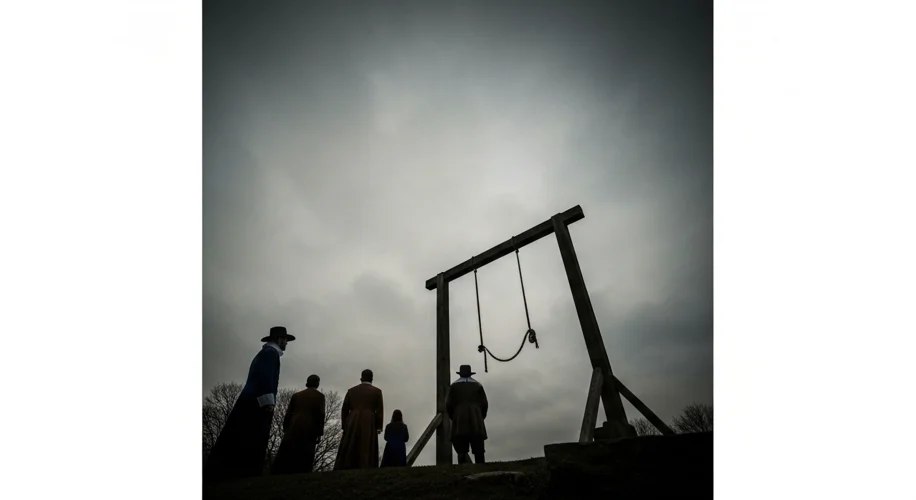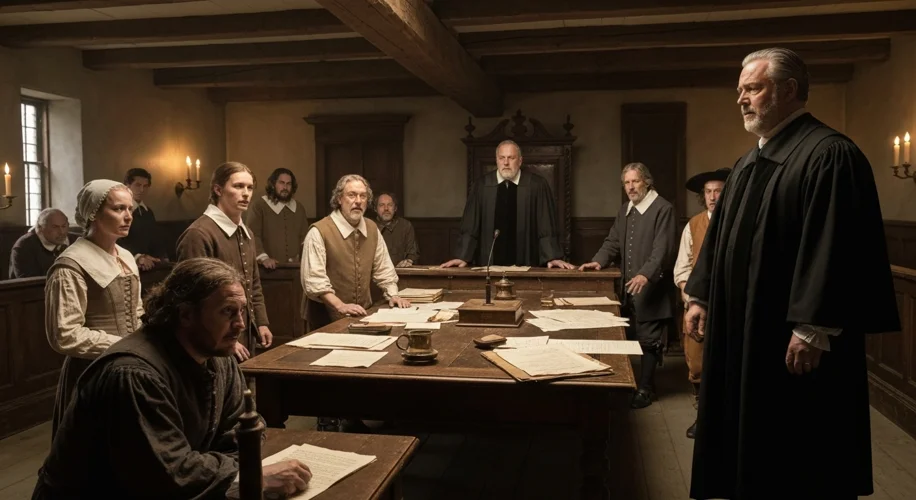The year is 1692. In the small, Puritan village of Salem, Massachusetts, a chilling shadow began to creep, fueled by fear, superstition, and the unsettling whispers of the unseen. What started with a few young women exhibiting strange fits and uttering wild accusations soon spiraled into a full-blown tempest of accusations, trials, and executions – the infamous Salem Witch Trials.
Life in late 17th-century New England was a constant negotiation with the harsh realities of nature and the perceived malice of the supernatural. The Puritan settlers, deeply religious and vigilant against the Devil’s influence, lived in a world where spiritual battles were as real as any earthly conflict. Their society was rigid, their theology unforgiving, and their anxieties about their place in God’s plan were palpable. This deep-seated religiosity, coupled with the isolation of frontier life and ongoing tensions with Native American tribes, created a fertile ground for suspicion and fear to fester.
The spark ignited in the home of Reverend Samuel Parris. His daughter, Betty Parris, and his niece, Abigail Williams, along with a group of other young women, began to experience inexplicable fits. They contorted their bodies, cried out in pain, and spoke in gibberish. The local doctor, unable to find a physical cause, attributed their affliction to witchcraft. The accusers, when pressed to identify their tormentors, pointed fingers at several women in the community, including Tituba, Reverend Parris’s enslaved woman from the Caribbean, Sarah Good, a homeless beggar, and Sarah Osborne, an elderly, infirm woman.
Tituba, perhaps under duress or seeking to protect herself, confessed to practicing witchcraft and described a spectral world of meetings with the Devil, spectral shapes, and animal familiars. Her confession, vivid and detailed, seemed to validate the terrified villagers’ worst fears. The contagion of accusation spread like wildfire. Soon, the circle of accusers widened, and the alleged victims were no longer just the marginalized figures of society. Reputable members of the community, including Rebecca Nurse, a respected elderly woman, and even Martha Corey, the wife of a prominent farmer, found themselves ensnared in the web of accusations.

The legal proceedings that followed were a mockery of justice. The accused were often pressured to confess, and spectral evidence – the testimony that the accusers saw the accused’s spirit tormenting them – was admitted, despite its unreliability. The accused who maintained their innocence were more likely to be convicted. The trials, held in Salem Town and Salem Village, saw a procession of testimonies, examinations, and pronouncements of guilt. The Court of Oyer and Terminer, specially convened to deal with the cases, handed down verdicts based on flimsy evidence and the fervent beliefs of the accusers.
By the time the frenzy subsided, 19 people had been hanged on Gallows Hill, their bodies buried in unmarked graves. Giles Corey, Martha Corey’s husband, was pressed to death with heavy stones for refusing to enter a plea. Several others died in prison while awaiting trial. The accused included men and women from various social strata, demonstrating how deeply the paranoia had permeated the community.
The turning point came when respected individuals, including Governor William Phips’s own wife, were accused, and prominent ministers began to question the validity of spectral evidence. By October 1692, Governor Phips ordered an end to the Court of Oyer and Terminer and established a Superior Court of Judicature, which disallowed spectral evidence. Many of the remaining accused were acquitted, and the witchcraft hysteria gradually receded, leaving behind a legacy of grief, regret, and a profound scar on the conscience of colonial Massachusetts.

The Salem Witch Trials remain a potent symbol of the dangers of mass hysteria, religious extremism, and the fragility of justice when fear takes hold. They serve as a stark reminder of how easily communities can be led astray by unfounded accusations, the erosion of due process, and the exploitation of public anxiety. The trials led to a re-examination of legal practices and a greater appreciation for individual liberties. In the years that followed, apologies were made, and reparations were paid to the families of those wrongly accused and executed. The narrative of Salem is not just a story of witchcraft; it’s a profound human drama about faith, fear, community, and the enduring struggle for truth and justice in the face of overwhelming darkness.


